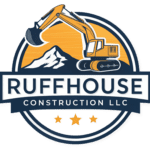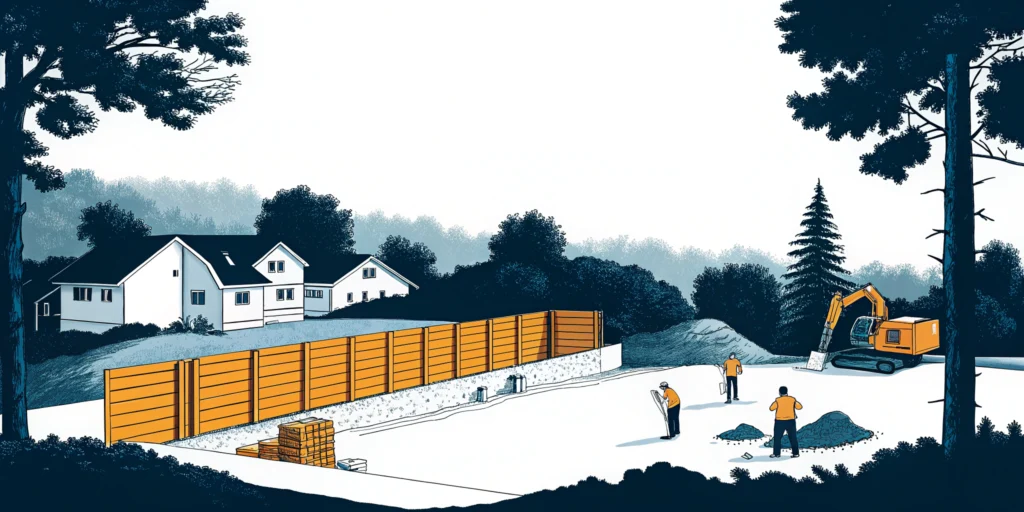If you’re planning deep excavations near existing buildings or utilities, you know how critical a solid support system is. Implementing excavation shoring best practices ensures your trenches stay stable and your team stays safe.
Ground support begins with choosing the right excavation support systems or shoring systems for deep excavation. In this article, you’ll learn how to assess site conditions, pick the correct soldier pile and lagging panel system, and maintain safe operations from start to finish.
We understand tight timelines can feel overwhelming, so these steps help you streamline your shoring process.
Assess site conditions
Evaluate soil type
- Cohesive soils resist collapse better than loose sands
- Water content affects saturation and wall stability
- Unstable ground may require driven sheets instead of shoring boxes
Conduct geotechnical testing
- Drill boreholes to sample topsoil and subsurface layers
- Analyze soil strength and composition in the lab
- Share results with your structural engineer
Review project scope
- Excavation depth, width, and geometry
- Nearby structures, utilities, and environmental constraints
- Anticipated loads per excavation shoring load capacity
Select shoring technique
Compare common options
| Method | Application | Best for |
|---|---|---|
| Hydraulic shoring | Shallow trenches | Soft soils |
| Sheet pile shoring | Waterfront, tight sites | Deep excavations |
| Soldier pile and lagging | Varied depths | Adjacent structures |
Match solutions to needs
Consult excavation shoring solutions to align method with site conditions
Choose soldier pile system
- Space piles to balance cost and performance
- Embed piles deep enough for lateral support
- Review soldier pile wall construction
Install soldier piles
Drill and set piles
- Drill to designed depth using rotary or percussion rigs
- Place H-piles or I-beams in each borehole
- Backfill with concrete or grout for firm anchorage
Align and secure piles
- Use levels to ensure piles are plumb
- Install temporary bracing for stability
- Verify embedment meets structural design
Place lagging panels
Select panel materials
- Timber offers cost-effective short-term support
- Steel panels handle higher loads and reuse easily
- Composite options reduce weight on equipment
- Review lagging panel material options
Install lagging panels
- Slide panels between piles in sequence
- Tighten panels to prevent soil leakage
- Secure with wales or clamps as specified
- Follow lagging panel installation process
Monitor and adjust systems
Instrumentation monitoring
- Install inclinometers to track lateral movement
- Use piezometers for groundwater pressure
- Log readings daily and after weather events
Regular inspections
- Walk the site each shift for visual checks
- Watch for soil bulging or water seepage
- Adjust bracing or dewater as needed
Ensure compliance and safety
Follow OSHA guidelines
- Obtain permits and approvals before work begins
- Classify soils per OSHA Type A, B, C
- Maintain slopes or protective systems for trenches
- Check excavation shoring regulations
Implement safety measures
- Set up exclusion zones to shield workers
- Provide personal protective equipment on site
- Develop emergency rescue plans in advance
- Incorporate excavation safety measures
Why choose RuffHouse Construction LLC
- Local expertise across Washington and Oregon
- 99% on-time delivery rate on shoring projects
- Zero lost-time incidents in five years
- Dedicated team for excavation shoring equipment selection
- Proven track record in complex soldier pile and lagging installations
When you’re ready to secure your excavation with reliable ground support, contact us for a free consultation.
Frequently asked questions
- What are excavation shoring best practices?
Best practices start with thorough site evaluation, proper shoring design, methodical installation, frequent monitoring, and strict regulatory compliance. - When should I choose soldier pile and lagging?
You’ll opt for this system when you need robust support near existing structures, especially on sites with deep or irregular excavations. - How deep can a soldier pile wall go?
Depth depends on design and soil, but most walls reach 30 to 60 feet with standard equipment. - What permits are needed for lagging panel installations?
You need an excavation permit, shoring approval, and often environmental clearance; check with your local building department. - How often should I inspect shoring systems?
Inspect daily, after heavy rain, and review instrumentation data regularly to catch any issues early.
Ready to start your own soldier pile wall project in Seattle, Tacoma, or anywhere in Puget Sound?
Learn how Ruffhouse Construction delivers safe, code-compliant soldier pile and lagging wall installations for any site.
See our Soldier Pile Installation Services for details and request a free estimate today.

